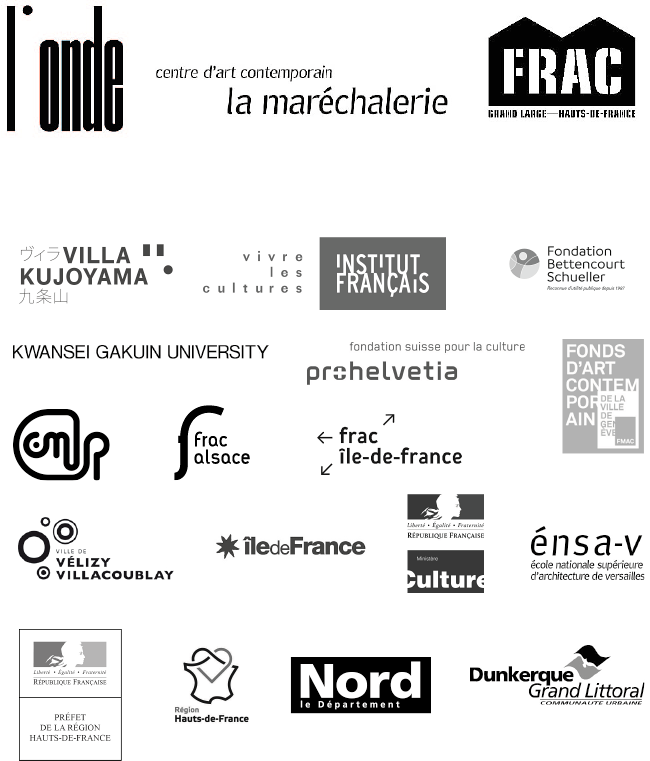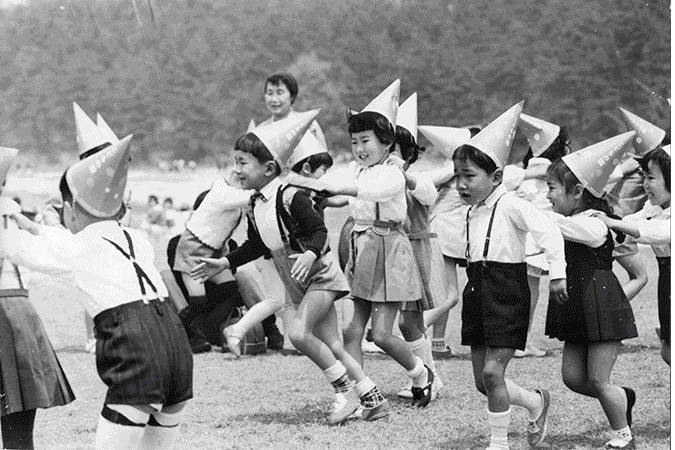April 7–July 8, 2018
Micro Onde & La Maréchalerie (starts at Micro Onde)
Micro Onde, Centre d’art de l’Onde
April 7–June 30, 2018
Vélizy-Villacoublay
Facebook / Twitter / Instagram
La Maréchalerie - centre d’art contemporain
May 16–July 8, 2018
Versailles
Facebook / Twitter / Instagram
Frac Grand Large - Hauts-de-France
January 26–March 24, 2019
Dunkerque
Facebook / Twitter / Instagram
Curator: Vincent Romagny
“Kodomo No Kuni” means “the country of children” in Japanese. It is the name of a children’s park in Yokohama, inaugurated on May 5, 1965, the day of the traditional children’s holiday, by the emperor of Japan, 10 years after the Japanese government’s official declaration stating that the country had completed its post-World War II reconstruction. Isamu Noguchi built his first playground there, while the avant-garde of Japanese architecture, the metabolists (Kyonori Kikutake, Kyoishi Kurokawa and Sachio Otani, under the leadership of Takashi Asada) built a few of their first buildings in the park, five years before the 1970 Osaka World’s Fair.
Kodomo No Kuni can be understood as a response to the natural and human cataclysms that contributed to writing the traumatic history of Japan. As early as 1923, after the Kanto earthquake that destroyed the Tokyo and Yokohama plain, an urban planning law required that any house built be located less than 500 meters from a piece of land on which the population could gather (the fires that followed the earthquake caused more fatalities than the earthquake itself). These pieces of land gradually welcomed playgrounds whose model the Japanese imported from the United States. Finally, since the Tohoku earthquake in 2011, which led to the Fukushima disaster, the furniture in these squares has been designed to be transformed into shelters and to provide means of subsistence. Likewise, many actions with a therapeutic aim to help traumatized children have been carried out with adventure playgrounds.
Isn’t celebrating childhood the best way to announce the beginning of a new era ? Kodomo No Kuni is not simply a physical and real place: it is also the sign of turning to childhood to survive traumas. It is the “Youkali” of Kurt Weill’s song, Peter Pan’s Neverland. Kodomo No Kuni reveals the importance of childhood to survive the debacle, it is a physical as much as a psychological, universal place. This traumatic past, and the turning to childhood that it can give rise to, is a recurring question in Japanese art, whether it is a matter of the Gutai artists seeking unconditioned and radically new gestures, or a new generation of artists that reexamines its obliteration
The exhibition cycle Kodomo No Kuni, Kodomo No Kuni – Enfance et aires de jeux au Japon at Micro Onde, Centre d’art de l’Onde in Vélizy-Villacoublay, Kodomo No Kuni – Mémoire et enfance au Japon at La Maréchalerie in Versailles and Kodomo No Kuni – Replay at the FRAC Grand Large – Hauts-de-France in Dunkirk, proposes a selection of works by contemporary artists—mostly Japanese—who take up here the theme of the exhibitions of the cycle Aires de jeux initiated in 2010 at the Centre d’art de l’Onde (Aires de jeux – contre-emplacements) and the Centre d’art du Quartier in Quimper (Aires de jeux – la police ou les corsaires). Kodomo No Kuni is that real and historical place, a territory that aggregates the sediments of the war, reconstruction, as well as generations of playgrounds. We can clearly understand that it is a place that is equally metaphorical that we will notably approach through an object and a theme: the playground and memory.
To be published
Anthologie Aires de jeux au Japon will be published at the end of 2018 at Tombolo Presses (Paris), with the support of Micro Onde, Centre d’art de l’Onde, La Maréchalerie – centre d’art contemporain, FRAC Grand Large – Hauts-de-France, CNAP, Villa Kujoyama and Fonds Ars Ultima. Graphic design: Marie Proyart.



